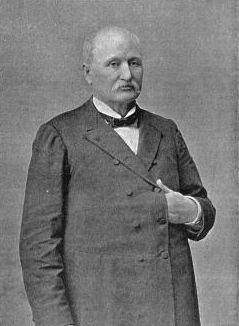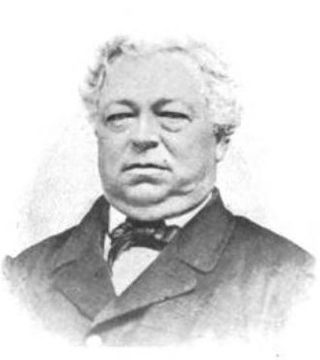
John Parker Hale was an American politician and lawyer from New Hampshire. He served in the United States House of Representatives from 1843 to 1845 and in the United States Senate from 1847 to 1853 and again from 1855 to 1865. He began his Congressional career as a Democrat, but helped establish the anti-slavery Free Soil Party and eventually joined the Republican Party.

The New Jersey Legislature is the legislative branch of the government of the U.S. state of New Jersey. In its current form, as defined by the New Jersey Constitution of 1947, the Legislature consists of two houses: the General Assembly and the Senate. The Legislature meets in the New Jersey State House, in the state capital of Trenton.

The Maryland Senate, sometimes referred to as the Maryland State Senate, is the upper house of the General Assembly, the state legislature of the U.S. state of Maryland. Composed of 47 senators elected from an equal number of constituent single-member districts, the Senate is responsible, along with the Maryland House of Delegates, for passage of laws in Maryland, and for confirming executive appointments made by the Governor of Maryland.
New York is a Democratic stronghold and is considered one of the "Big Three" Democratic strongholds alongside California and Illinois. The following table indicates the party of elected officials in the U.S. state of New York:
The State of New Hampshire has a republican form of government modeled after the Government of the United States, with three branches: the executive, consisting of the Governor of New Hampshire and the other elected constitutional officers; the legislative, called the New Hampshire General Court, which includes the Senate and the House of Representatives; and the judicial, consisting of the Supreme Court of New Hampshire and lower courts.

The Executive Council of the State of New Hampshire is the executive body of the U.S. state of New Hampshire. The Executive Council advises the Governor on all matters and provides a check on the governor's power. While the governor retains the right to veto legislation passed by the New Hampshire General Court, and commands the New Hampshire National Guard, the council has veto power over pardons, contracts with a value greater than $10,000, and nominations. The Executive Council Chambers have been located in the New Hampshire State House since the chambers were added to the capitol in 1909.

The New Hampshire House of Representatives is the lower house in the New Hampshire General Court, the bicameral legislature of the state of New Hampshire. The House of Representatives consists of 400 members coming from 203 legislative districts across the state, created from divisions of the state's counties. On average, each legislator represents about 3,300 residents, which is the smallest lower house representative-to-population ratio in the country.

James Adams Weston was a civil engineer, banker, and an American politician from Manchester, New Hampshire, who served as mayor of Manchester for several terms and was the 33rd governor of New Hampshire.

The 1912–13 United States Senate elections were held on various dates in various states. They were the last U.S. Senate elections before the ratification of the Seventeenth Amendment in 1913, establishing direct elections for all Senate seats. Senators had been primarily chosen by state legislatures. Senators were elected over a wide range of time throughout 1912 and 1913, and a seat may have been filled months late or remained vacant due to legislative deadlock. Some states elected their senators directly even before passage of Seventeenth Amendment. Oregon pioneered direct election and experimented with different measures over several years until it succeeded in 1907. Soon after, Nebraska followed suit and laid the foundation for other states to adopt measures reflecting the people's will. By 1912, as many as 29 states elected senators either as nominees of their party's primary or in conjunction with a general election.
New Hampshire is often noted for its moderate politics and its status as a prominent swing state. Voters predominantly selected Republicans for national office during the 19th and 20th centuries until 1992. Since then, the state has been considered a swing state. Since 2006, control of the state legislature and New Hampshire's congressional seats have switched back and forth between Republicans and Democrats. Although the state has voted for the Democratic candidate in the last four presidential elections since 2004, it has done so by relatively small margins.

Elections in the U.S. state of New Hampshire are held at national, state and local level. The state holds the first presidential primary in the national cycle. Elections for a range of state positions coincide with biennial elections for the House of Representatives.
The following table indicates the party of elected officials in the U.S. state of Connecticut:
The following tables indicate party affiliation in the U.S. state of Florida for the individual elected offices of:
The following table indicates the party of elected officials in the U.S. state of New Hampshire:

The 1874–75 United States Senate elections were held on various dates in various states. As these U.S. Senate elections were prior to the ratification of the Seventeenth Amendment in 1913, senators were chosen by state legislatures. Senators were elected over a wide range of time throughout 1874 and 1875, and a seat may have been filled months late or remained vacant due to legislative deadlock. In these elections, terms were up for the senators in Class 1.

Two United States Senate elections were held in Illinois on March 26, 1913. The two elections were interconnected through a compromise made to elect a Democrat in the regular election and a Republican in the special election.

Elections were held in Illinois on Tuesday, November 7, 1950.

Elections were held in Illinois on Tuesday, November 3, 1942.

The 1812 New Hampshire gubernatorial election was held on March 10, 1812.

The 1863 New Hampshire gubernatorial election was held on March 10, 1863.












